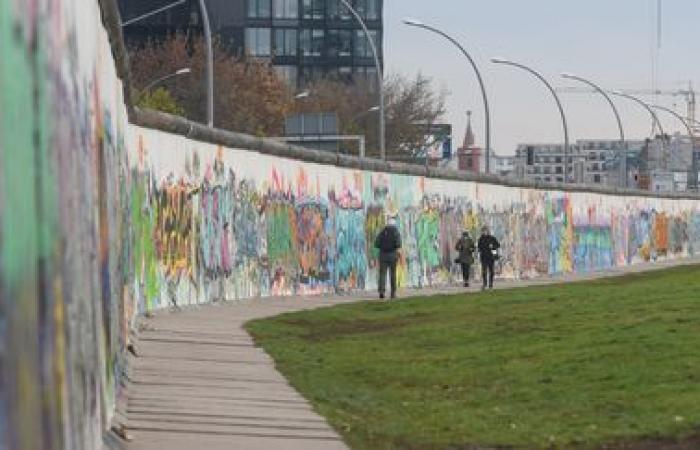Despite the fall of the Berlin Wall more than thirty years ago, East and West Germany remain divided.
Published on 10/11/2024 14:45
Updated on 10/11/2024 17:19
Reading time: 2min

It was 35 years ago, November 9, 1989: the fall of the Berlin Wall which divided Germany between 1961 and 1989. With the reconciliation between East and West, Germany grew by 43% and the population increased by a quarter. If the physical border has disappeared, inequalities remain even if the authorities do everything to blur them.
In Berlin, there are only a few hundred meters of wall still intact out of the 155 kilometers of gray concrete that separated East from West. Like the remains of a wall, the memory of which is fading, believes the mayor, Kai Wegner: “If you ask Berliners today, myself included, where the wall went precisely, many will no longer be able to say precisely… And that’s a good thing.”
If the wall has disappeared, the divisions, despite everything, remain: salaries are 20% lower in the East and it is the West Germans who occupy the positions of responsibility, for example. Reunification is not complete; believes Dirk Oschmann, the author of a book on the subject: “20% of West Germans have never been to the East. The East is described as a place where weird people live, who are usually Nazis. They say it's ugly and this are always images of dilapidation that circulate in TV series. Basically, the East is a region where we have no reason to go.
In government, Carsten Schneider is responsible for ironing out East/West differences. He believes that the former GDR has assets to put forward: “There are jobs, and also very good schools. On the real estate market, you can get a renovated apartment in Chemnitz for six euros per square meter, to rent. And we have land, where the companies can set up shop. All this, an hour by train from Berlin.”
After the fall of the Wall, more than three million Germans left the East to settle in the West. The former GDR, with its aging demographics and shortage of labor, needs more than ever to attract new inhabitants.
35 years after the fall of the Berlin Wall, inequalities persist – report by Sébastien Baer
“>
listen (2min)
France
World








